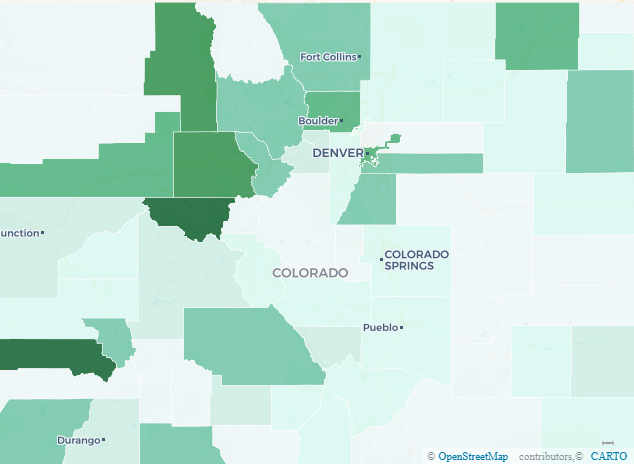
Rural Colorado is home to the most — and least — extreme income inequality in the state, according to a new study from the liberal-leaning Economic Policy Institute.
The key differentiation seems to be whether a county has a destination ski resort within its borders. The counties home to Aspen, Telluride, Steamboat Springs, and Vail top the EPI's list, while Rio Blanco, Lake, and Teller counties are at the bottom.
Pitkin County is the most unequal county in the state with the top 1 percent making 72.2 times more than the bottom 99 percent. The average income of workers in the bottom 99 percent is $91,714 where the top 1 percent earn $6.6 million on average.
"These are resort communities that therefore then rely on a service sector," study co-author Mike Price said. "The things that make it attractive to the uber wealthy naturally exclude people who might make a living waiting tables or serving at the bar."
Statewide, the study says that in order to be among the top 1 percent, you’d have to make $458,576 a year. That’s 20.6 times more than what the bottom 99 percent make in the state, who on average earn $61,165 each year. The average annual income of the top 1 percent is $1.26 million.
Colorado ranks 20th nationally for income inequality. The top 1 percent in the United States earns 26.3 times more than the other 99 percent, the study shows.
EPI's study argues that rising income inequality has led to a new "gilded age," where the rich stay rich, and the poor stay poor. Some conservative academics argue that where income inequality is extreme, the middle class and poor tend to have higher standards of living than they do elsewhere.
CPR's Ann Marie Awad contributed to this report.









